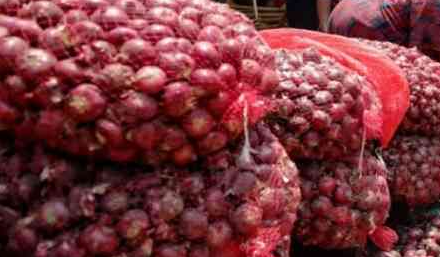Onion prices increase by 51.4 per cent on reduced imports from Tanzania

Onion prices have remained elevated over the past year due to a local shortage of the vegetable.
The price of onions has increased by 51.4 per cent in the last 12 months because of reduced imports from Tanzania, which is the largest supplier of onions to Kenya.
Data from the Kenya National Bureau of Statistics (KNBS) shows that a kilogramme of onions which was selling at Sh99.31 in January last year has now shot up to Sh150.4.
More To Read
- Tanzania opposition urges ICC and UN to investigate mass killings after disputed elections
- AU, Federal Republic of East Africa call for calm amid post-election unrest in Tanzania
- SADC calls for calm as Tanzania faces deadly post-election violence
- President Samia Suluhu Hassan receives winner’s certificate as CCM extends grip on power
- Food inflation remains high despite overall stability - KNBS
- Musalia Mudavadi warns Kenyan youth against crossing border for protests
This is a big blow to consumers, who are also shouldering an increase in the price of other food commodities such as sugar, carrots, rice and cooking flour.
Onion prices have remained elevated over the past year due to a local shortage of the vegetable. The shortage came after Tanzania, which is the main supplier of onions to Kenya, restricted exports of the commodity last year.
About 50 per cent of the red onions in Kenya are imported from Tanzania, according to the United Nations Food and Agriculture Organisation's (FAO) 2014 report.
Last year, Tanzania put restrictions on the export of some agricultural produce by traders to Kenya. This affected the supply of maize, onions and other farm produce from Tanzania to Kenya leading to elevated prices.
The decline in imports has been worsened by a decrease in production from farmers who have been affected by an increase in the cost of farm inputs such as fertilizers.
The majority of farmers in Kenya usually produce onions between January and March and between August and October. This means there is usually a shortage during the other months.
Most onion farmers are smallholders, which means they plant the crop in small parcels of land. Local production has therefore been hampered by the high cost of inputs.
Demand for onions is, however, projected to continue to rise in the coming years as Kenya’s population continues to increase.
Kenya is projected to consume 148,000 metric tons of onions by 2026, up from 140,000 in 2021.
The rise in the price of onions helped push food inflation to 7.9 per cent during the period compared to the same period last year.
Other food products whose prices rose sharply during the 12 months are carrots (57.2 per cent), sugar (32.1 per cent), oranges (15.7 per cent) and tomatoes (13.4 per cent).
Top Stories Today













































